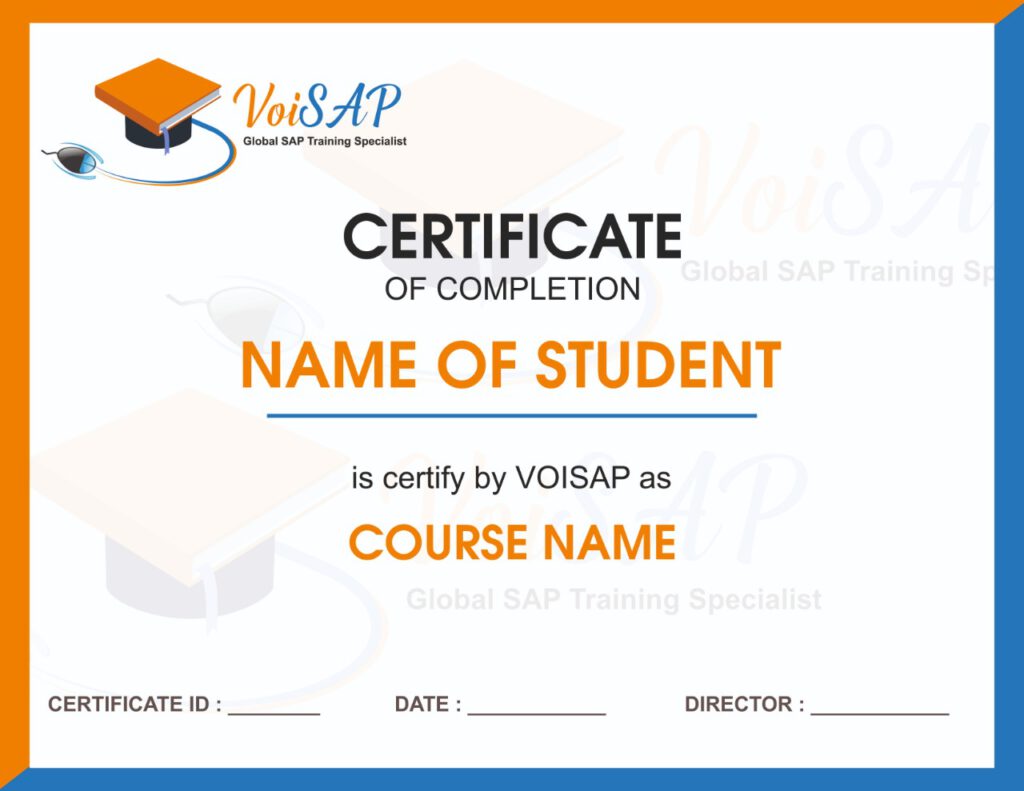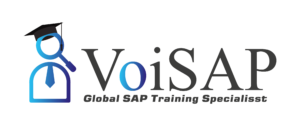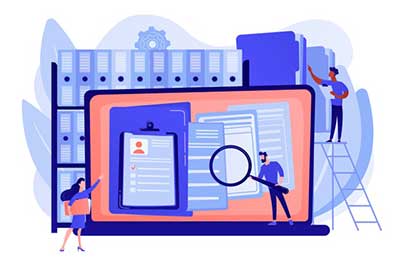Oracle DBA Certification Training
Eligility & Pre-requisites
Eligibility
This online Oracle certification course is ideal for freshers, programmers, software developers, and testing professionals who want to learn Oracle. It’s also ideal for marketing professionals and salespeople who want to better understand their company’s data.Pre-requisites
There are no prerequisites for this database training course. This course can be taken up by anyone who wants to learn SQL.
Oracle DBA Course Overview
This Oracle certification course gives you all of the information you need to successfully start working with Oracle databases and make use of the database in your applications. Learn how to correctly structure your database, author efficient Oracle statements, and clauses, and manage your Oracle database for scalable growth.
Benefits
Oracle, though an old language, is highly significant today as companies across the world are gathering massive amounts of data for their growth. Oracle consistently ranks high in the most-requested tech skills and learning it will add great value to your array of skills.
CA: 1-416-569-4606
WhatsApp – 1-416-569-4606
Email – contact@voisap.com
Request more information
Like the curriculum? Enroll Now
Structure your learning and get a certificate to prove it.
Skills Covered
Training Options
Batches
- Lifetime access to high-quality eLearning
- 2000 Step-by-Step Screenshots, SAP Books
- Lifetime System Access
- Free Accounts and Excel Sessions
- 24x7 learner Whatsapp assistance and support
- Professional Resume
- Intense Interview Preparation
- Linkedin Preparation
- Free 6 Months On-the-Job Support
One-on-One (Recommended)
- EVERYTHING OF BATCHES PLUS...
- Lifetime System Access
- Schedule Sessions at your convenience, ANYDAY, ANYTIME
- Ability to cancel, postpone, reschedule sessions (No anxiety of missing sessions)
- Missed sessions? No Problem, Join Full Training as many times
- Access to Realtime Project Documents as Samples
- Access to Exclusive VoiSAP Practice Guides
CORPORATE TRAINING
(Online, Client sight)
Customized to your team's needs
- EVERYTHING OF BATCHES PLUS...
- Customized Training for your Business Processes
- Customized Training Manuals, Documents
- Well Experienced Corporate Trainers
- Simulation test papers for self-assessment
- Simulation test papers for self-assessment
- 24x7 learner assistance and support
Course Currilcum
What is the Oracle database? How it functions? pre-requisites, oracle database, multiple non-CDB’s share nothing, oracle database 12c installation, multi-tenant architecture, non-CDB oracle system data mixed with user data, multitenant container database, pluggable database.
The Architecture of Oracle server, the key components – Oracle Instance and Oracle Database, the various file types – data files, control files, redo log files, benefits of CDB, easier management of database, support for oracle database resource manager, pluggable database (PDB), database instance, contents of CDB and pluggable DB, control files and redo log files, shared oracle supplied metadata, root container, data dictionary, creation of PDB’s, seed PDB, limit PDB
The basics of Oracle Storage structures, logical storage units like tablespaces, data blocks, extents and segments, database Schemas, Schema Objects, Operating System blocks, table statement and way to check “create table”, the instance, the CDB, containers, root containers, PDB, local user and common user, local privileges and common privileges, steps to create a container database, creating a container database using sqlplus, database configuration assistance
The Oracle Instance consists of background processes and memory structures, learn about the Oracle process and memory architecture, shared pool, redo log buffer, and buffer cache, different methods of creating PDB, steps involved in PDB, using PDB$SEED, without FILE_NAME_CONVERT, synchronization, plug a non-CDB to CDB, plug a non-CDB into CDB using DBMS_PDB, clone PDBS, plug and un-plug, plug unplugged CDB in to CDB
The Oracle background process errors can be monitored using the Trace Files and Alert Logs, learn how this can be deployed for Oracle Administration and support.
The methodology of starting a database instance, initializing parameter files, preparing for startup, serving user requests, understanding of the Server process and user process, administrative activities on PDB, new views associated with PDBS, determining which PDB you are in, four functions, opening, closing, and altering the open mode of PDBS, setting the default and temporary tables places for a PDB, using the alter system command from within a PDB, instance parameter change impact
Automatic data optimization, ILM components, ILM challenges, what is automatic data optimization, heat map and ADO, DBA heat map segment view, monitoring statistics, creating compression polices, creating storage tiering policy, preparing evolution and execution
Hands on Lab :- Automatic Data Optimization, Reduction Policies, Alter Policy
Learn about the powerful Oracle database security features, data privacy, regulatory compliance, “create user” process, altering and dropping users, generating profiles and limiting resources, auditing, activity monitoring and blocking.
Understanding of Database Schema objects, the various types available like views, tables, clusters, indexes, sequence, database links, packages and procedures, learning how data is stored in database tables, creating of temporary tables and external tables.
Resource manager. Resource manager and pluggable database, managing resource between PDBs, CDB resource plan basics:share, CDB resource plan basics:Limits, creating a CDB resource plan, creating a CDB resource plan:SQL example, enabling a CDBresource plan, managing PDB resource plan
Mastering the database Schema objects, learning Materialized View, deploying user-generated schema object for generating sequence, the balanced search tree index structure for placing and locating files, learn about data concurrency and data consistency in multi-user databases, the concepts of Locking and Deadlocks.
Study the client/server Network Environment, configuring the network, connecting to the database, the Oracle Network Environment and database link, starting up a instance, SHOUT DOWN, NOMOUNT, MOUNT, OPEN, PDB, OPEN, clone PDBS.
Understand how Oracle database ecosystem backup and recovery is deployed, the database testing, database standby, Media recovery options, backup in offline mode, CDB backup and recover, archiving challenges and solutions, in data base archiving, security and performance: audit architecture, consolidation: unique audit trail, extended audit information, data pump audit policy, new administrative privileges, new administrative privileges:SYSBACKUP, new administrative privileges:SYSDG, new administrative privileges:SYSKM
Learn the significance of Oracle Recovery Manager, how it deploys performance, management and restoration of entire databases, learn about SQL Loader, Oracle Data Pump for import and export and support for External Table.
The Oracle Data Dictionary contains information related to database privileges, objects, users, and roles, learn Dynamic Performance Table for identifying instance-level problems, get complete knowledge to work with Oracle DBA, connection access DBA, data dictionary views, after CDB creation, alert log file, provisioning new pluggable databases NOARCHIVELOG mode, media failure, flashback CDB, data dictionary views
Understanding what is database tuning, skills needed to lower response time, increase throughput for time-sensitive applications, how to optimize the storage space, deploy SQL scripts, Index Statistics and Selectivity, how to tune the database, what is a Chained Row and Lock in Oracle.
In-depth understanding of the Oracle database tuning, what is a shared pool tuning, how to improve the performance with the help of data dictionary, tuning the data dictionary, implementing the PL/SQL code and reusing the code and database buffer.
Confused about your Career? Take Free Career counselling
What our eLearners say about us
Excellence speaks for itself. Experience us through Authentic Google Reviews and Videos.
Google Reviews





Like the curriculum? Enroll Now
Structure your learning and get a certificate to prove it.
Certification
As part of our eLearning program, you will be practically involved in various projects and assignments, which include Realtime Project Scenarios as well. This gives you realtime practical industry exposure.
VoiSAP’s certificate will be issued once you successfully complete the training which includes practicals, assignments and quiz.
VoiSAP’s certification training is recognized by more than 500 top MNCs, including CGI, Accenture, Walmart, Amazon, IMAX, Sony, RBC, HSBC, Standard Chartered Bank, IBM, Infosys, Lafarge, TCS, and many more.



